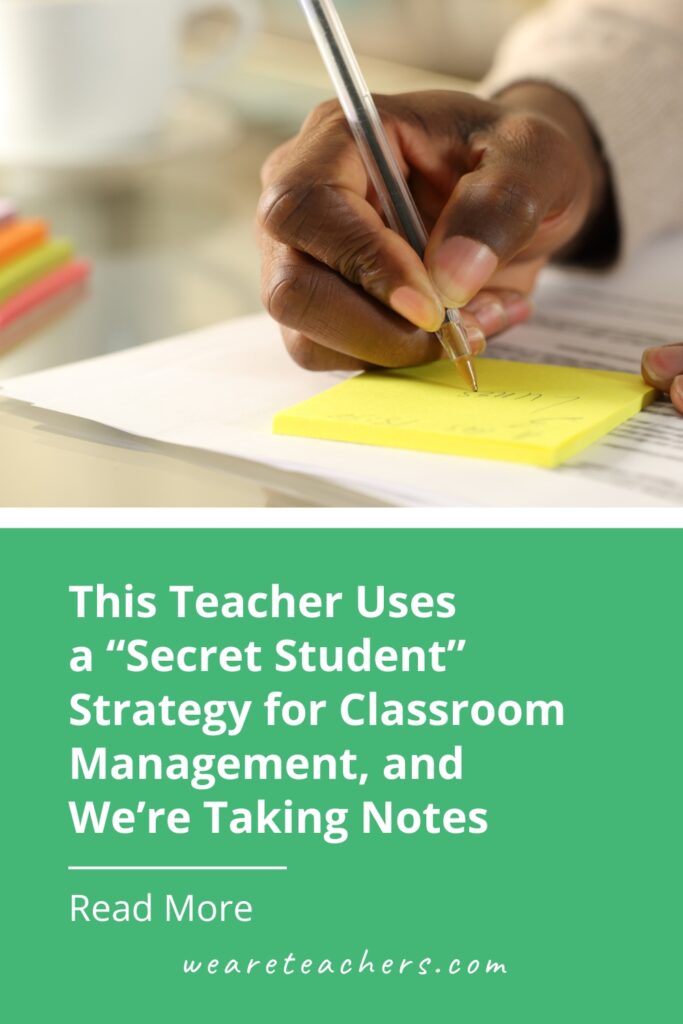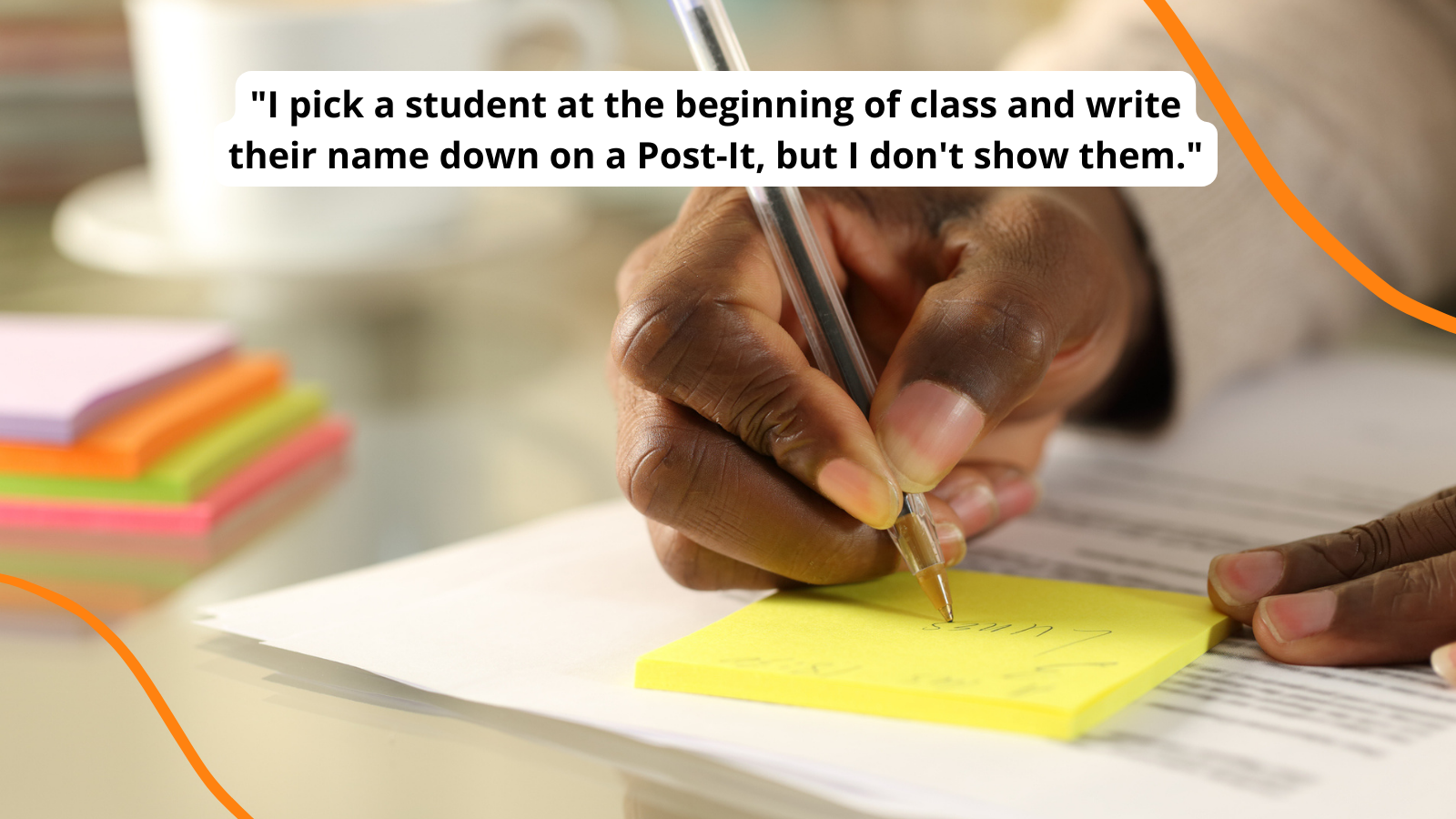In a post where another teacher was asking for noise-management strategies, we noticed this comment from user Jordan Lee:
Something I use with my middle school students is “secret student.” I pick a kiddo at the beginning of class and write their name on a Post-It, but do not tell anyone who I picked. I tell the class that I am going to be watching that student throughout the class period to see if they are following the set expectations. If they are, the whole class gets some sort of reward. It could be 5-10 minutes of free time, extra recess, no homework, they get to choose a game, etc. If they have followed the expectations, I announce the student at the end of class and say, “You can thank so-and-so for no homework because they followed the expectations.” If they did not follow the expectations, I would just say, “I didn’t quite see our expectations followed by our Secret Student, but you’ll have another chance at the reward next week.” This works really well with my kids, and they usually hold each other accountable because they all want the prize.
Reading about this strategy, my mind started flitting with possibilities. You could use this when you need especially stellar behavior, like for class speakers or subs!
You could connect this to SEL by teaching a certain skill (e.g., kindness) and then choosing a Secret Student to watch for that skill!
Class discussions!
Field trips!
Content vocabulary practice!
OK, I’ll stop now.
Why we love this strategy:
- It’s anonymous. Since not even the Secret Student knows who it is, there isn’t pressure from the class on one single student.
- It’s not a group-punishment strategy. It doesn’t require the entire class’s compliance to get the reward; neither does one student’s behavior put the whole class’s reward in jeopardy (unless that student is the Secret Student).
- It’s adaptable. I could see fun high school teachers who have great relationships with their students using this to determine whether a quiz will be taken earlier or later, or whether that night’s reading will be one or two chapters.
Things to keep in mind when using the Secret Student strategy:
- Keep the student a secret. Just as pro Jordan did in her example, don’t announce who the Secret Student was if they miss the mark.
- Establish procedures with your class before implementing. Some I would consider in my class:
- Students can only encourage each other positively. Make a collaborative list of positive encouragement phrases (“You’ve got this!” “Can I help you?” “You’re doing a great job!”)
- Congratulate the Secret Student when they win the reward for their class. How great would this be for a student who needs a little encouragement?
- It’s not their job to figure out who the Secret Student is or was if they miss out on the reward. Comments that blame or shame are not welcome, e.g., “I bet it was Hank because he was off-task!”
- Make sure you factor student challenges and disabilities into this strategy. Some conditions make it more difficult for students to follow directions in ways that look like their peers, and that can’t be held against them.
- Consider letting families know about the Secret Student system so they can opt out if they want to. While many students would feel energized and motivated at the thought of being the Secret Student, I can think of several past students of mine with major anxiety who would have been frozen with panic at the thought that a group reward rested on their shoulders.
- Make the reward low-risk. If a classmate of mine ruined my shot at a donut party or free day, I’m pretty sure I would start a riot. Keeping the rewards low-risk makes it easy for the class to recover if they miss the mark.
With the right procedures in place, Secret Student sounds like a great way to help manage student behavior and increase the sense of community in a classroom. Thanks again to Jordan Lee for sharing!
For more articles like this, be sure to subscribe to our newsletters.


